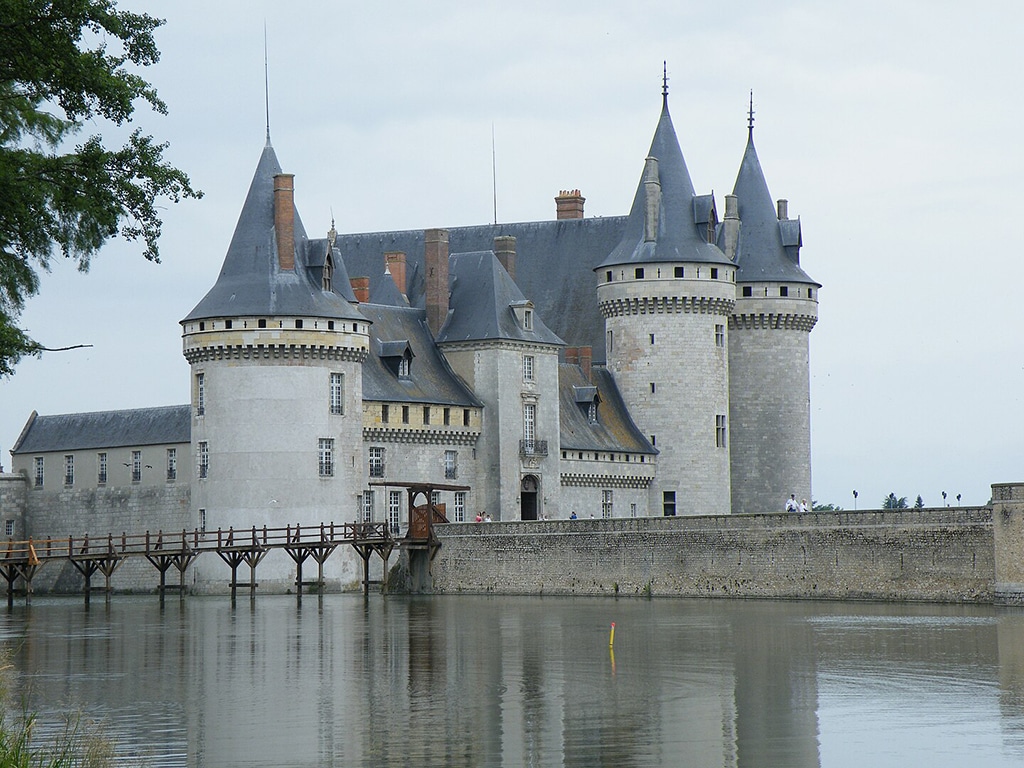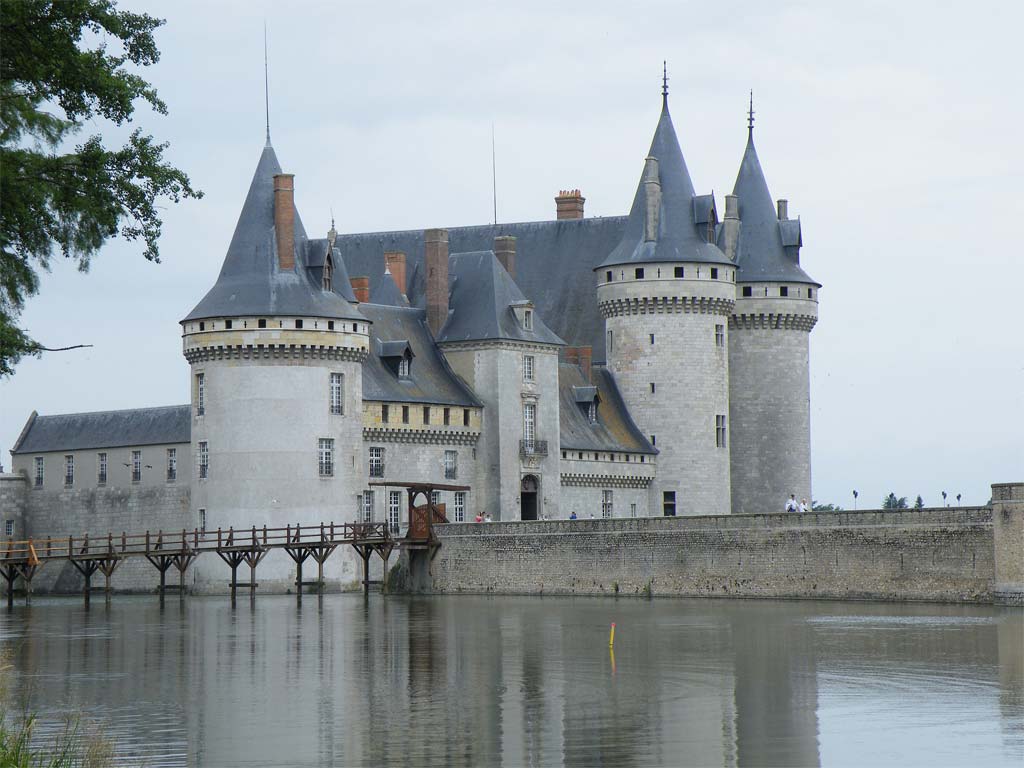- Le Château de Chenonceau : le célèbre château qui enjambe le Cher
- Origine
- Bohier et l’année d’anniversaire
- Diane et le pont
- Catherine de Médicis
- Louise Dupin
- Marguerite Pelouze
- Dans l’histoire moderne
Le Château de Chenonceau est situé près du petit village de Chenonceaux et est le château le plus connu du Val de Loire.
Le ministère français de la Culture a classé le château Monument historique en 1840.
Le Château de Chenonceau : le célèbre château qui enjambe le Cher
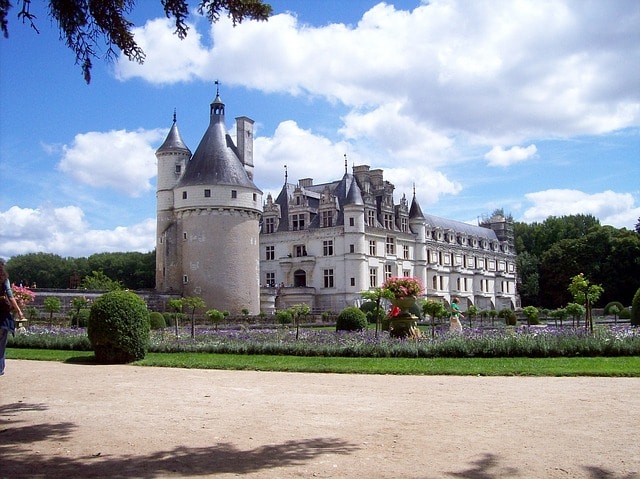 Le château est ouvert au public et est l’un des plus populaires en France, étant probablement le deuxième après le Palais royal de Versailles. Avec un nombre de visiteurs estimé à 800 000 par an, il s’agit de l’une des principales attractions touristiques de la France.
Le château est ouvert au public et est l’un des plus populaires en France, étant probablement le deuxième après le Palais royal de Versailles. Avec un nombre de visiteurs estimé à 800 000 par an, il s’agit de l’une des principales attractions touristiques de la France.
Le château a une longue et riche histoire. Il est passé de propriétaire en propriétaire au cours de son existence. Outre ces différents propriétaires, l’apparence actuelle du château était l’œuvre de plusieurs architectes qui n’ont cessé de compléter et de modifier sa structure.
Voici une discussion approfondie sur les propriétaires et les différentes étapes de la conception du château.
Origine
Le fief de Chenonceau appartenait à la famille Marques. Le château d’origine, appartenant à Jean Marques, a été brûlé en guise de peine pour sédition. L’événement a nécessité la reconstruction du château et la fortification de son moulin. L’héritier, Pierre Marques, s’est retrouvé endetté, ce qui l’a obligé à vendre le château.
Bohier et l’année d’anniversaire
Pierre a vendu le château en 1513 au chambellan du roi de France Charles VIII à l’époque. Bohier a démoli la majeure partie du château, mais a gardé le donjon intact pour faire place à une nouvelle résidence. Voilà pourquoi le 500e anniversaire du château a été célébré en 2013, et pas avant, malgré le fait qu’il a existé dès le début du 13e siècle.
Diane et le pont
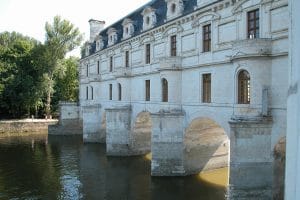 La pauvreté a une fois de plus frappé le propriétaire du château. Le roi de France François Ier a saisi la propriété en raison de dettes que Bohier devait à la Couronne française. Après la mort du roi François, son second fils, le roi Henri II lui succède. Le roi Henri II a offert la propriété à sa maîtresse Diane de Poitiers.
La pauvreté a une fois de plus frappé le propriétaire du château. Le roi de France François Ier a saisi la propriété en raison de dettes que Bohier devait à la Couronne française. Après la mort du roi François, son second fils, le roi Henri II lui succède. Le roi Henri II a offert la propriété à sa maîtresse Diane de Poitiers.
Il fut un temps où le château demeurait simplement à côté du Cher. La nouvelle propriétaire s’est passionnément attachée à son château. Pour augmenter sa splendeur ou peut-être pour le rendre plus majestueux, Diane a donné l’ordre à l’architecte et écrivain français, Philibert de l’Orme, un homme connu comme étant l’un des maîtres de la Renaissance française, de relier le château à la rive opposée de la rivière.
Catherine de Médicis
Rares sont les propriétaires du Château de Chenonceau qui ont été aussi célèbres ou renommés que Catherine de Médicis. Catherine de Médicis était la veuve du roi Henri II. Bien déterminée, Catherine a obligé la maîtresse de son défunt mari de faire un échange. Diane donnerait Chenonceau à Catherine et recevrait le Château de Chaumont en retour.
Catherine a contribué à la conception de Chenonceau en y ajoutant ses splendides jardins. Étant la régente de France, Catherine de Médicis avait de vastes quantités de ressources à sa disposition. Elle a consacré beaucoup de richesse à l’amélioration du château et en dépensait encore plus sur de somptueuses soirées dans le domaine. Outre les jardins, Catherine a donné l’ordre de créer de nouvelles pièces entre la bibliothèque et la chapelle du château.
Catherine avait davantage de projets pour le château qui ne se sont jamais concrétisés. Dans le second volume de Les plus excellents bâtiments de France de Jacques Androuet du Cerceau, une gravure a montré que Catherine avait des idées pour élargir le château.
Pour l’anecdote, le premier spectacle de feux d’artifice jamais donné en France a eu lieu au Chenonceau. L’événement visait à célébrer et à marquer l’accession de son fils, François II, au trône.

Elle était la belle-fille de Catherine de Médicis et la femme du roi Henri III. Sa plus grande contribution au château a été de mettre des rideaux noirs lorsqu’elle a appris l’assassinat de son mari.
Louise Dupin
Louise Dupin a hérité du château de son père Claude Dupin, un riche écuyer qui a acheté le château pour 130 000 livres. Elle n’a rien apporté à son architecture. Cependant, lorsqu’elle était la propriétaire du château, elle y a accueilli certains des plus grands écrivains du Siècle des Lumières tels que Fortenelle, Rousseau, Condillac, Voltaire, et bien d’autres encore. Elle a sauvé le château de la destruction pendant la Révolution française, en déclarant que c’était le seul moyen de traverser la rivière sans faire de nombreux kilomètres.
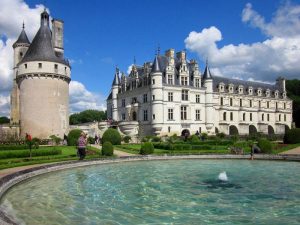 Marguerite Pelouze
Marguerite Pelouze
Marguerite était une riche héritière qui a acquis le château dans les années 1860. Elle a donné l’ordre à Felix Rouguet de restaurer la propriété. Il a enlevé certains des éléments ajoutés par Catherine de Médicis, tels que des chambres et des statues de dieux grecs. Comme beaucoup de ses prédécesseurs, elle a dépensé beaucoup d’argent en organisant des fêtes somptueuses qui ont entrainé sa faillite et la saisie du château.
Dans l’histoire moderne
Le château est tombé entre les mains d’Henri Menier, un membre d’une famille célèbre pour leurs chocolats. Il a servi d’hôpital pendant la Première Guerre mondiale. Il a ensuite été bombardé pendant la Seconde Guerre mondiale par les Alliés et les Allemands à différentes occasions.
Après la guerre, la famille a confié la restauration du Château de Chenonceau à Bernard Voisin afin de lui redonner son ancienne gloire.



